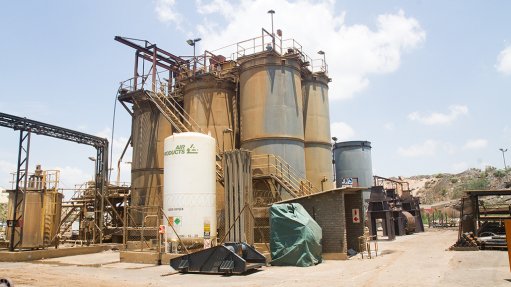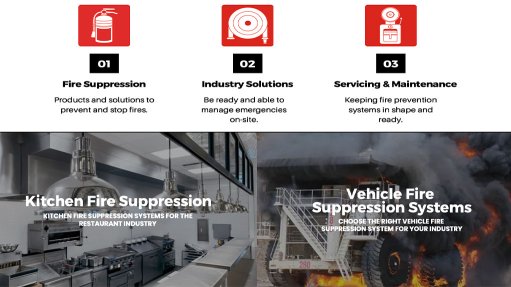Platinum industry expected to take off
Global platinum investment organisation the World Platinum Investment Council (WPIC) believes that the current state of the platinum-group metals (PGMs) industry is, overall, buoyant as PGMs continue to be in demand for a range of industrial, and other, applications.
The effect of elevated palladium and rhodium prices on the basket price has seen PGM mining companies posting strong earnings, says WPIC research director Trevor Raymond.
“The high price of palladium and rhodium is a reflection of the significant growth in demand from the automotive industry, primarily for use in emissions control in gasoline-engine vehicles.”
The demand growth is a result of increasingly stringent global policies to limit vehicle emissions that have come to the fore over the past three years, particularly in Europe and China, he adds.
Consequently, with the price of palladium having gone well above that of platinum from 2018, platinum use in gasoline vehicles is increasing as automakers substitute platinum, a more cost-effective one-to-one substitute, for palladium in gasoline autocatalysts.
“Confidentiality has prevented the details of platinum substitution being made public; the volume of its replacement may be notably higher than WPIC’s published predictions. However, details are slowly becoming public and platinum substitution is likely to be the largest single component of short-term platinum demand growth, with WPIC’s current forecast predicting that 200 000 oz of platinum will replace palladium in 2022, rising to at least 400 000 oz in 2023.”
While the WPIC’s forecast for platinum for 2022 is a sizeable surplus of 637 000 oz, this could vary considerably, as small changes in its current assumptions might move this surplus to balance or even deficit.
“Current market dynamics appear to contradict the surplus we are forecasting for 2022,” Raymond remarks, noting that platinum lease rates are about 2%, which are significantly higher than the 0.1% three-year, pre-Covid average, and that participants in the physical market are using the New York Mercantile Exchange futures as a source of supply.
“Interestingly, platinum’s industrial demand segment – the second largest after automotive demand and the largest when recycling is offset against gross demand in automotive – is forecast to decline by 13% in 2022.”
This follows the segment’s 26% year-on-year increase in 2021, owing to a massive increase in glass manufacturing capacity. However, Raymond notes that this is typical of industrial demand, where capacity additions sporadically boost steady yearly top-up demand.
Additionally, platinum remains the premier jewellery metal, particularly for the world’s finest jewellery, renowned as it is for providing the most secure settings for gemstones, including diamonds.
Further, he comments that “despite the global supply chain disruption that has resulted from the Covid-19 pandemic, including the shortage of semiconductor chips, platinum automotive demand is forecast to increase by 20% in 2022”.
This growth is being driven not only by platinum-for-palladium substitution, but also by the increase in platinum loadings in autocatalysts, required to meet ever-tightening emissions limits.
Expanding Platinum’s Role
Green hydrogen’s role in global decarbonisation is increasing, and platinum, in combination with iridium, is one of the preferred electrolyser technologies for producing green hydrogen from renewable power, typically solar and wind.
Platinum is also used in the production of fuel cells that power fuel cell electric vehicles (FCEVs). Platinum’s strategic role in facilitating the implementation of the hydrogen economy over the next two decades has also become far more recognised by investors worldwide, driving increased interest in platinum as an investment asset with precious metal and industrial metal attributes, Raymond comments.
WPIC believes strongly that, over the medium term, the transition from internal combustion engine (ICE) vehicles to electric vehicles, both battery electric vehicles and FCEVs, will be far slower than current market forecasts suggest. There is, in fact, a growing realisation in some countries where bans on ICEs are mooted, that a move to 100% electrification of the vehicle fleet is not achievable. Instead, it is recognised that hybrid vehicles, which include a PGMs-bearing catalyst, are likely to play a significant ongoing role in the energy transition of transportation. In addition, if hybrid ICE vehicles form part of the transition to electric, it will be essential to ensure those vehicles have the lowest possible emissions, achieved by higher loadings of PGMs per vehicle. Consequently, demand for palladium, rhodium and platinum in the automotive sector is likely to remain far stronger for longer.
In the longer term, FCEVs appear likely to require more than three-million ounces of platinum a year between 2030 and 2035, presenting a significant expansion opportunity for PGM mining companies, and a highly beneficial outcome for Southern Africa.
Raymond adds that, when considering the current dynamics behind the demand/supply balance, it is important to remember that supply was disrupted in 2020 by outages at PGMs-producer Anglo American Platinum’s converter plant in Rustenburg.
As a result, about 550 000 oz of platinum was built up in 2020 in semi-processed material, which was subsequently processed in 2021, providing a one-off boost to mined supply. It is not an indicator of PGM producers increasing output in response to high PGM prices, rather a release of a backlogged material. Indeed, at the end of 2022, underlying global mining supply will actually be lower than pre-pandemic 2019 levels.
Consequently, mined platinum supply is expected to remain constrained because most supply growth projects have three- to four-year lead times. However, strong potential short-term demand growth from substitution and higher loadings with significant medium- to long-term demand growth potential from platinum’s strategic role in the hydrogen economy provides investors with a compelling reason to consider an investment in platinum, Raymond concludes.
Article Enquiry
Email Article
Save Article
Feedback
To advertise email advertising@creamermedia.co.za or click here
Announcements
What's On
Subscribe to improve your user experience...
Option 1 (equivalent of R125 a month):
Receive a weekly copy of Creamer Media's Engineering News & Mining Weekly magazine
(print copy for those in South Africa and e-magazine for those outside of South Africa)
Receive daily email newsletters
Access to full search results
Access archive of magazine back copies
Access to Projects in Progress
Access to ONE Research Report of your choice in PDF format
Option 2 (equivalent of R375 a month):
All benefits from Option 1
PLUS
Access to Creamer Media's Research Channel Africa for ALL Research Reports, in PDF format, on various industrial and mining sectors
including Electricity; Water; Energy Transition; Hydrogen; Roads, Rail and Ports; Coal; Gold; Platinum; Battery Metals; etc.
Already a subscriber?
Forgotten your password?
Receive weekly copy of Creamer Media's Engineering News & Mining Weekly magazine (print copy for those in South Africa and e-magazine for those outside of South Africa)
➕
Recieve daily email newsletters
➕
Access to full search results
➕
Access archive of magazine back copies
➕
Access to Projects in Progress
➕
Access to ONE Research Report of your choice in PDF format
RESEARCH CHANNEL AFRICA
R4500 (equivalent of R375 a month)
SUBSCRIBEAll benefits from Option 1
➕
Access to Creamer Media's Research Channel Africa for ALL Research Reports on various industrial and mining sectors, in PDF format, including on:
Electricity
➕
Water
➕
Energy Transition
➕
Hydrogen
➕
Roads, Rail and Ports
➕
Coal
➕
Gold
➕
Platinum
➕
Battery Metals
➕
etc.
Receive all benefits from Option 1 or Option 2 delivered to numerous people at your company
➕
Multiple User names and Passwords for simultaneous log-ins
➕
Intranet integration access to all in your organisation


















